It’s that time of year again – the annual Sports Technology Buyer’s Guides, with this one focused specifically on the best bike computers and accessories. My goal here being to give my specific recommendations – exactly the same recommendations I’d give to my own friends and family, based on the continual usage of most of these products in product testing and comparisons – as well as just my day-to-day riding. This list isn’t here to compile every option on the market in an effort to make every manufacturer happy. It’s a condensed list of my recommendations.
Now this year I’m doing things a bit differently. Previously I had one giant page with every category: Running, cycling, swimming, action cameras/drones, sensors, etc… And this year is basically no different, except that I’ve split it apart into a few different guides:
– GPS Watch Recommendations (Running/Hiking/Triathlon/Swimming)
– Cycling GPS Computers (and sensors)
– Action Cams & Drones
The content is the same, just broken out into three shorter and more focused guides instead. The reason for this is frankly pretty simple: People don’t search for “Sports Tech Recommendations”, they search for “Best Cycling GPS”. Further, I found the previous guides just got so unwieldy to make and read. These will all pop out pretty quickly (as in, over the next 12-18 hours).
Oh, one more thing, if you’re new around here note that I don’t take any money/sponsorships/whatever from any of the companies. That’s just the way I roll. So if I like a device, it’s because it’s a legit good device I want to use. And if you want to support the work I do here, consider using any of the Amazon/Competitive Cyclist/Wiggle/etc links below.
With that, let’s dive into it!
Best All-Around Bike GPS
For this category we’ve got the Garmin Edge 530 & Wahoo BOLT (V2)
If we were to play purely a features game, the Edge 530 would win this category no problem (or the Edge 830 if you want to pay $100 more). But it’s not as simple as that. For what the Wahoo BOLT lacks in features, it does make up for in simplicity and ease of use. Mostly.
Starting with the Edge 530 – it got a boatload of new features upon launch a few years back. ClimbPro being one of the biggest, which automatically shows each segment of your climbs as you go through them on a course. It’s super cool for hilly/mountainous routes. Atop that, for mountain bikers, there’s a massive swath of features from trail routing to jump metrics. And of course – the biggie for the Edge 530 was that it now includes detailed routable maps for your region.
Meanwhile, the Wahoo BOLT V2 added a color display this past spring, as well as full maps onboard. And it supports all the sensors you’re likely to use these days, including Garmin’s Varia Radar. Atop that – one of the biggest points for the Wahoo is the phone integration, which is super smooth and ‘just works’. There’s no fiddling with trying to get, or keep, the pairing, nor is it complicated to find features. Sure, it has fewer features (a lot less), but it’s also just simpler for many folks to pick up and go. My ‘mostly’ comment earlier on with the Wahoo BOLT V2 is that it mostly works for me. Like, 95% of the time everything is great. And then there’s the 5% of the time where something, often minor, doesn’t work. This seems to mirror most of the comments in my post on it (even ones from the last few days). Still, I’d be remiss if I didn’t mention it.
Both of these units are usually about $300, though the Edge 530 is on sale for $249 right now (and 159-180EUR in Europe, which is astounding). Finally, you’ll notice I didn’t include the Edge 830 here. Look, there’s absolutely nothing at all wrong with the touchscreen-capable Edge 830. It’s simply that for the vast majority of people, the Edge 530 has everything they need (including me). I use the units interchangeably, and don’t have any issues with the touchscreen – but also don’t miss the Edge 830 when I’m using the Edge 530. To each their own!
| Product | Amazon | Competitive Cyclist | |
|---|---|---|---|
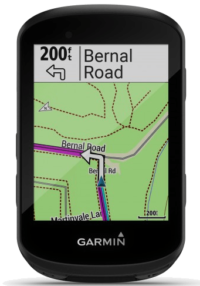 | Garmin Edge 530 | Amazon | Competitive Cyclist |
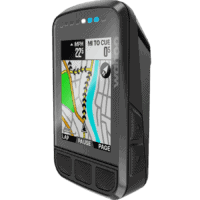 | Wahoo ELEMNT BOLT V2 | Amazon | Competitive Cyclist |
Best Mapping & Navigation GPS
In this case, the two picks are the Garmin Edge 1030 Series & Hammerhead Karoo 2.
When it comes to depth of mapping features with no price limit, there’s really no competition here – the Edge 1030/1030 Plus wins every time. Note that Garmin released the Edge 1030 Plus last summer (2020), which includes a handful of new features, but many of those new features have been added to the original Edge 1030 since launch, and Garmin continues to add new features to the base Edge 1030 (even just last week). So if you find a good deal on the Edge 1030, I’d grab that.
If you want to do it from your handlebars, there’s a pretty darn strong chance the Edge 1030 can do it. It’s a bit bigger than I probably need, it does things well and there’s no touchscreen issues. I don’t really know of anyone that doesn’t love their Edge 1030/Plus. Even the comments mirror that on not just my review, but all reviews. People are happy there, minus a few folks with a blue halo display issue – but support seems to take care of them pretty quickly, and Garmin says they’ve long since changed the manufacturing cause of that.
Next, we’ve got the Hammerhead Karoo 2. They continue to add an astounding number of new features to not just the Karoo 2, but the original Karoo as well. The whole Karoo series if you will. The Karoo 2’s display is brilliant – by far the best in the business – and the features and user interface continue to get refined. On average, Hammerhead releases new features every 2-4 weeks for it. Seriously, just look at this list, and then tap into any of those update compilations. They support virtually every cycling sensor type from radar to bike lights, and their mapping engine is quite good.
This past year they added CLIMBER, which is kind of like Garmin’s ClimbPro, except prettier. It’ll show more details than Garmin’s ClimbPro, though in some cases the exact gradient accuracy isn’t quite as sharp with that additional detail. Still, it’s awesome. And price-wise, it’s substantially cheaper than the Edge 1030 Plus.
The big-ticket differences between the Garmin and Hammerhead units here are more about structured training and physiological tracking. While Hammerhead does do structured workouts, they don’t support TrainerRoad or many other platforms. Further, they don’t have any of the training load/recovery bits that Garmin does. Now, whether or not you find that useful is a different question.
Finally, why not the Wahoo ROAM? Well, it’s just far outclassed these days by the Hammerhead Karoo 2. Both in mapping capability as well as general features, the only exception is Wahoo has TrainerRoad outside workout integration and Hammerhead doesn’t (though, Hammerhead has hinted at that for about a year now). And from a mapping standpoint, the Hammerhead has a full onboard database of actual street addresses, versus the more limited dataset that Wahoo has.
| Product | Amazon | Competitive Cyclist | |
|---|---|---|---|
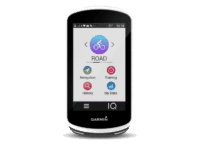 | Garmin Edge 1030 | Amazon | Competitive Cyclist |
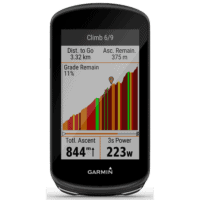 | Garmin Edge 1030 Plus | Amazon | Competitive Cyclist |
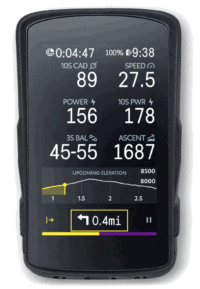 | Hammerhead Karoo 2 | Competitive Cyclist |
Best Budget Bike GPS:
My two picks here are the Lezyne Mega-XL & Garmin Edge 130 Plus
There were almost no new launches in this category this past year, only removals. Previously I included the Stages Dash L10 in here, but that’s been discontinued, leaving previously just Lezyne. But the Edge 130 series prices have crept down while Lezyne’s have mostly stayed the same (fair enough).
We’ve got the Lezyne Mega-XL at $199. Lezyne has like 38 different models between $100 and $200, I tried to explain it all here a few years ago, and then they added more. They’ve all got minor nuances. These units can do basic mapping, and pull in routes from sources like Komoot, as well as legit turn by turn navigation in terms of things like saying ‘Left on Maple Street’. The Lezyne units support both ANT+ & Bluetooth Smart. And as I write this, the Lezyne Mega-XL Yellow Submarine Edition is 35% off at $129.
Meanwhile, the Edge 130 Plus sits at $199 normally, but is $149 right now. Most notably, it’s tiny. A fraction the size of the Lezyne. Of course, it doesn’t have the full mapping like the Lezyne, but does have breadcrumb routing and Strava Live Segments. It also has Garmin’s ClimbPro in it, which shows the details about the current climb you’re on. The Edge 130 Plus also has mountain bike metrics (such as grit/flow/jumps), as well as LiveTrack showing your planned course/route. Probably the biggest difference aside from mapping between this unit and the Lezyne is the app/ecosystem polish, where Garmin is a fair bit ahead of Lezyne. But figuring out which feature is most valuable to you is key.
Finally, it’s worthwhile noting that the Sigma ROX 2.0 & ROX 4.0 at least deserve an honorable mention in here, at $90 and under (and a bit less in Europe), they include turn by turn routing from Komoot, as well as ANT+ & Bluetooth Smart sensor integration for the 4.0 edition. Seriously, it’s pretty impressive. I just haven’t spent as much time as I’d love to with them to root out any quirks.
| Product | Amazon | Competitive Cyclist | |
|---|---|---|---|
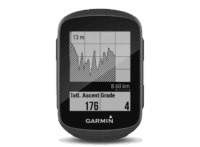 | Garmin Edge 130 Plus | Amazon | Competitive Cyclist |
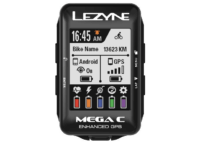 | Lezyne Mega- XL GPS | Amazon | Competitive Cyclist |
Best Bike Sensor Accessories:
If you’re getting any of the units listed above, you may be in the market for accessories. Obviously, some bundles include accessories, while others do not. Here’s what I recommend based on having entire buckets worth of accessories to test with.
No matter which sensor you get, ensure it’s dual ANT+/Bluetooth Smart. It’s virtually impossible to buy something that isn’t that these days, but just want to note that. Ideally, you’d also buy something that’s multi-channel Bluetooth too (like the latest sensors from Polar, Garmin, and Wahoo), just in case you need to connect multiple things to that sensor at once (such as Zwift and a watch).
Heart Rate Sensor (Chest strap): Polar H9/H10 and Garmin HRM-DUAL
Looking for a non-optical HR strap? I almost exclusively use the Garmin HRM-DUAL and the Polar H9/H10 these days, with a side of the Garmin HRM-PRO if I’m doing some running stuff. I generally use the Polar H9 at home for trainer workouts, and the Polar H10 at the DCR Cave. There’s no logic to that other than me bringing home the H9 one day and it staying there. The H10 simply has the ability to record the workout itself, if you want. I almost never use that feature since it’s kinda cumbersome.
While the Wahoo TICKR has been on this list for years, and it’s still generally a much-loved strap by many – I (and my wife) have been having some frustrating times with a few of the newer units lately (dropouts namely, both TICKR & TICKR-X). This seems mirrored by friends I know. Therefore at the moment, it’s in the penalty box.
Finally, it’s worth noting that there are dozens of chest straps out there. And yes, most of them will work just fine. However, I’ve found long-term that buying from one of the well-known brands tends to produce the best results. For example, it’s almost unheard of to hear a complaint about a Polar H9 or H10.
Oh, one note for Garmin users who also run:
If you’re looking for running dynamics with your Garmin device, that’ll require an HRM-TRI, HRM-RUN, HRM-PRO, or RD-POD – or, more recently the Wahoo TICKR X 2020 can do that too. The HRM-PRO is the only one of that group from Garmin that’s dual ANT+/Bluetooth Smart, and despite being pricey, it’s what I’d recommend if you’re a Garmin user that wants Garmin Running Dynamics. While the TICKR X does transmit the Running Dynamics standard, just be aware that it lacks a few fields that the Garmin straps do.
Similarly, if you’re planning to be a Wahoo RIVAL user, I’d veer more towards the Wahoo TICKR X than the Garmin straps, since the TICKR X transmits additional Running Dynamics data that the RIVAL doesn’t yet see from the Garmin straps.
Heart Rate Sensor (Optical): Polar Verity Sense
If I’m using a standalone optical HR sensor, it’s almost undoubtedly the Polar Verity Sense, which is basically a slightly updated version of the Polar OH1+. Not only does it broadcast dual ANT+/Bluetooth Smart, but a simple extra button push will record the workout to memory and then sync easily into Polar’s Flow app/platform (and onwards to platforms like Strava, if you want it to).
While in years past I’ve recommended the Scosche Rhythm/Rhythm 24, the app experience just isn’t what Polar’s is. Little things like having only a handful of hours of onboard storage for that is tough – whereas I can record boatloads of workouts to the Polar Verity Sense and it happily syncs them all down the road. Plus, you get the entire Polar training analysis ecosystem along with it.
Cadence-Only: Wahoo RPMv2 or Garmin Cadence V2
I’ll use either unit, when I use one at all. Both transmit dual ANT+/Bluetooth Smart cadence signals, however the Garmin also transmits a second pairable cadence signal. For cyclists using a watch that’s Bluetooth Smart only (like Polar or Suunto), this would allow you to concurrently pair it to your watch for tracking your workout there, as well as pairing it to your smart trainer app like Zwift.
Note that technically I find the Garmin ANT+ cadence-only attachment system slightly better than Wahoo’s, as it doesn’t require zip ties and instead uses an industrial-strength rubber band. But that’s probably not a big deal for most people.
Speed-Only: Wahoo SPEED or Garmin Speed V2
While I rarely use a speed sensor on my regular road bike, I do use one on my commuter and cargo bikes – simply to track mileage. The Garmin V2 sensor will act like a normal dual ANT+/Bluetooth Smart speed sensor, but it’ll also quietly download a copy of every ride to your Garmin Connect account (and then onwards to connected apps like Strava).
If you don’t care about that, then realistically it won’t matter which sensor you use. Like the cadence sensor, the Garmin does have dual-Bluetooth Smart as well as being dual ANT+/BLE, but for an outdoor unit that’s frankly less important. Again – either the Wahoo or Garmin one will work just fine – both are dual ANT+/Bluetooth Smart.
Best Safety Sensor: Garmin Varia RTL-515 Radar
We’ve seen radar usage increase among cyclists as well as bike computer makers, supporting the Varia Radar (the RTL-515 is the current version that combines bike lights + radar, the RVR315 is just the radar). It’s now supported by virtually all major cycling bike computers: Wahoo, Garmin, Hammerhead, Stages, Bryton, and others I’m probably forgetting. There’s good reason: It’s an awesome little device that helps cyclists keep safer. I’ve yet (still!!!) to find someone who bought one that is unhappy with it.
It’s on sale right now for the holidays, so that’s noteworthy too. Also noteworthy is that for many years I’ve included the Cycliq Fly 6 in this category, which is a combination bike light + safety camera. But given their removal of a slew of features in its most recent edition, in combination with an increase in customer service complaints, I’ve decided to skip it this year. I love the concept of the device, but removing the ANT+ integration was silly, since that helped improve safety by automatically turning it on, and starting recording when you started a ride.
Trainers, Apps, and Power Meters:
Now if you’re looking for indoor trainers or trainer apps, then check out my two dedicated posts on that. My trainer post is from a year ago, but…umm…there have been almost no new trainers since that timeframe, except the JetBlack VOLT, which you can slot into the mid-range recommendations category just fine. There’s also my previous trainer app guide, which helps you get the lay of the land.
And finally, power meters. Yes, I know I need to desperately release a 2021 guide. To quickly recap the year that was:
We saw Garmin refresh Vector 3 by renaming it Rally, and adding secondary pedal types that you can swap yourself (SPD-SL, SPD, and the previous Look KEO). Some 7 or so months later, people still seem pretty darn happy there. Favero added Shimano SPD-SL compatibility to their Favero Assioma lineup, and Wahoo has further delayed their Speedplay-based power meter. SRAM introduced their RIVAL power meter, which I didn’t find accurate in my limited testing before SRAM took it back. I haven’t seen it since.
Then there’s Shimano R9200P that was announced at Eurobike. Shimano says (as of last week) that won’t start shipping till February, yet oddly, it’s already showing up on full bikes in retail shops. SRM did recently release a new SRM PM9, which adds temp compensation (finally!) and Bluetooth support (also finally!). I haven’t tested either yet. Companies like 4iiii & Stages continue to offer solid options in this space, especially for affixing a unit to an existing crankset.
Beyond that, there’s been the usual slate of largely no-name brands in Asia with mostly single-sided units. The accuracy, purchasing, and support experience seems mixed at best. Given the cost of name-brand power meters with good support and such continues to drop, it’s hard for me to recommend buying something off AliExpress for what is often just a few dollars in savings. Oh, and PowerTap units have ceased being produced/shipped in any fashion. SRAM bought them out a few years ago, but now the PowerTap brand seems either on long-term leave, or dead.
I suppose I just re-wrote the power meter buyers guide in like 4 paragraphs instead of 40 pages.
Wrap-Up:
Most of these products being on this probably aren’t a surprise. They shouldn’t be anyways. After all, they don’t generally become industry-leading products by being crappy. And that’s especially true in the cycling world, where we as users tend to place more emphasis on reliability and function, than form. After all, this is really the first year that all of the contenders in the All-Around and High-End category have had color displays. Meanwhile, the budget tier keeps it real with simplicity.
No matter the case, you won’t go wrong with any of these. They’re well tested, not just by me for in some cases years on end, but also by countless others.
Invariably, folks will wonder when refreshes of the different units might happen. While that’s hard to predict for any given unit, historically speaking we don’t tend to see new bike GPS computers until the April timeframe (often tied to the Sea Otter event). And broadly speaking, that’s when virtually all companies tend to release units. Except in years when companies release bike computers at Eurobike, which was historically the last few days of August. But with that moving to July now, there’s little reason to announce something bike-computer-wise then. It kinda misses the boat (as did Eurobike, frankly).
I suspect almost all companies will shift to the April/May timeframe (or earlier), partially because it just makes sense. That’s when people are looking to buy units for the upcoming Northern Hemisphere outdoor cycling season.
Hopefully, no matter what is released down the road, we see companies continue the recent trends of releasing firmware updates for older bike computers, rather than just pumping out new ones without features for perfectly hardware-capable units. We’ve seen good older-unit firmware updates from Garmin and Hammerhead especially, but also Wahoo and Lezyne to a lesser extent but still participating in that party.
With that – thanks for reading!

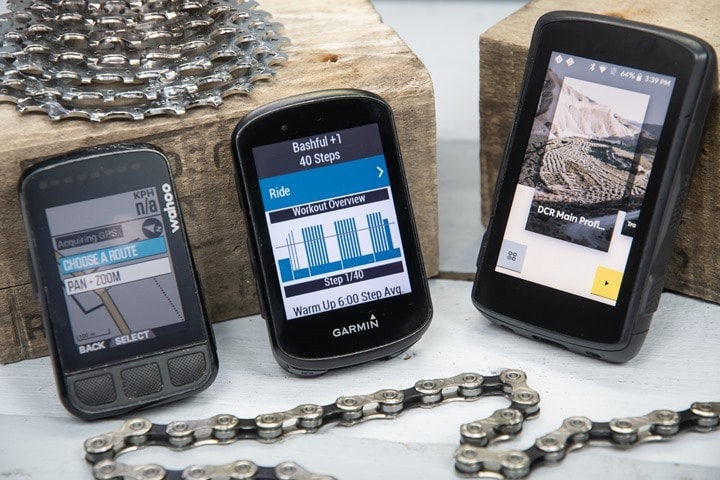
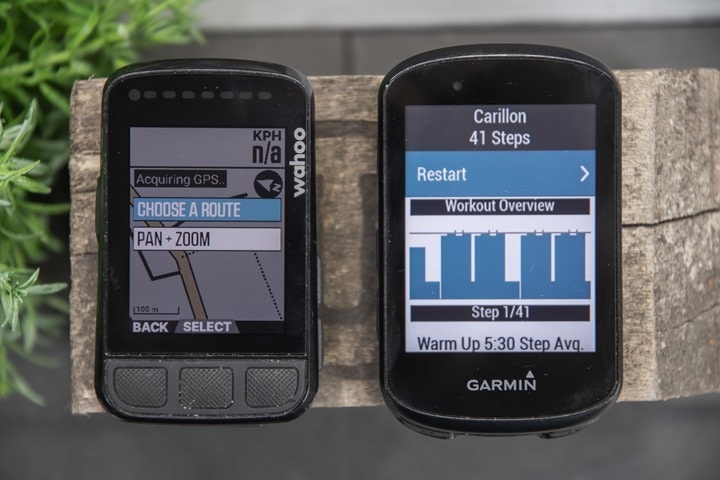
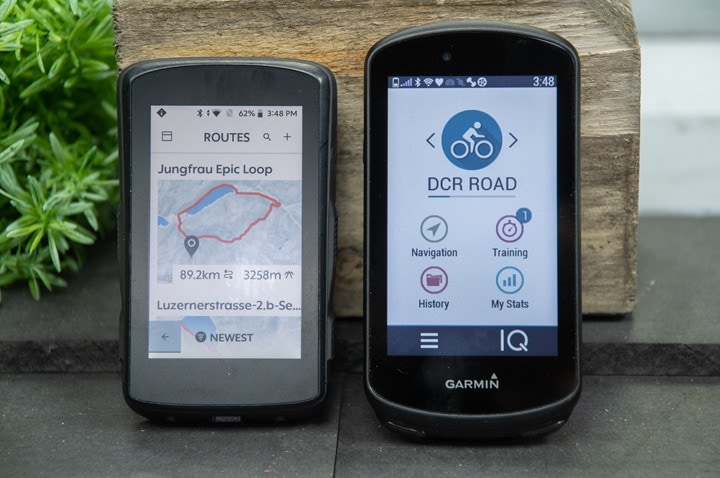
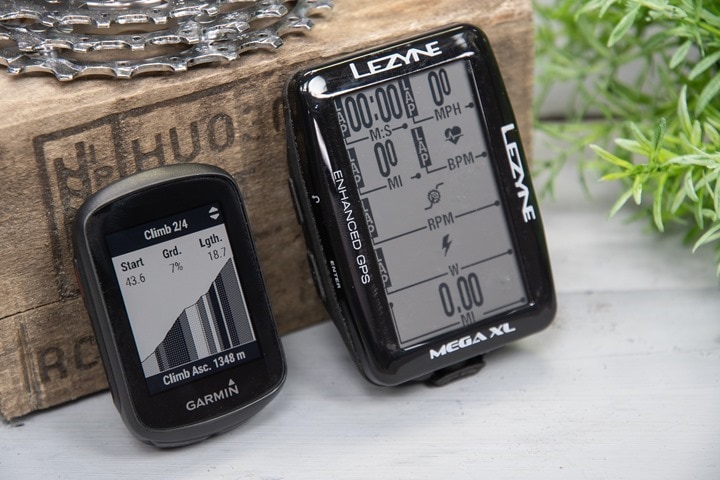
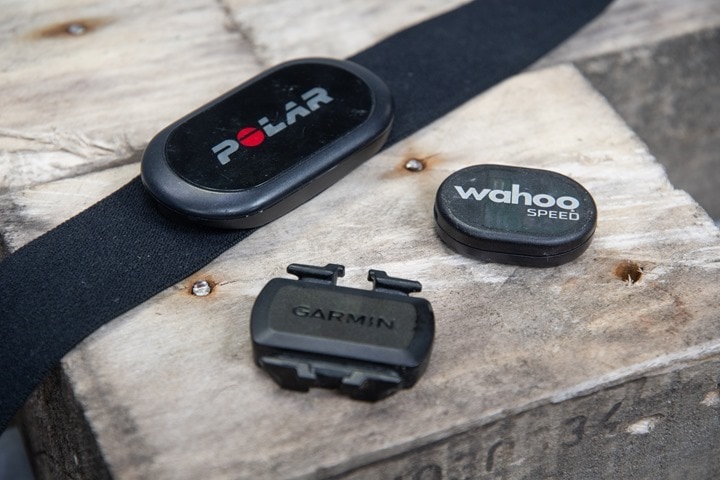
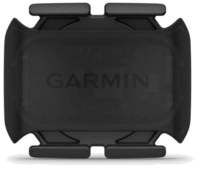


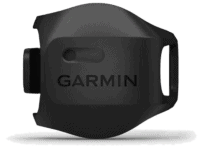

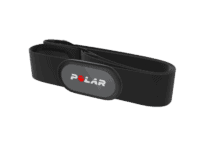

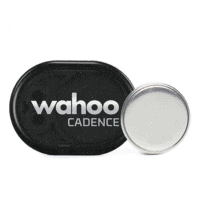
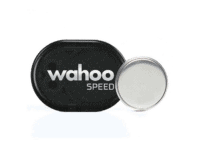
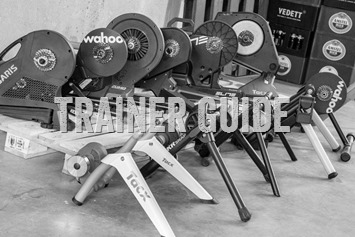

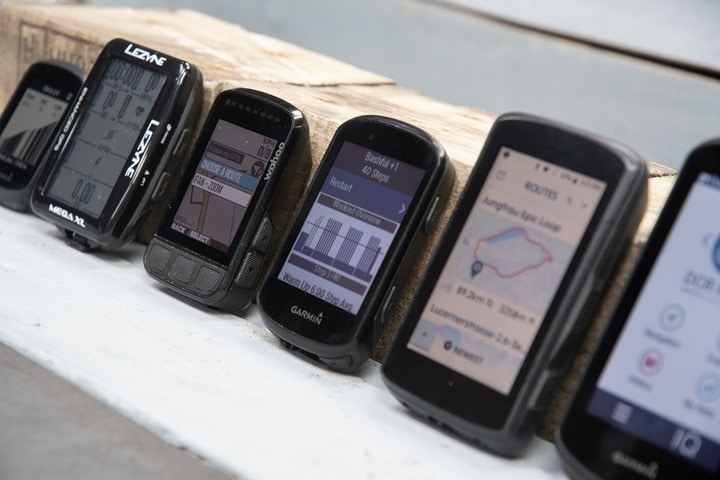
















Ha!! I am first…ok nothing really to add though, thanks for the short and sweet review!!
Bought the 530 yesterday on the German amazon for 158. And the 130 plus was 119. Who would not take the more capable and colour display for 40 euro more?
Hi Ray,
Could you point me to a review that compares the current navigation/mapping function of the Garmin Edge 530 to the Wahoo Bolt V1/V2?
Thanks
I am not Ray and I don’t have a video, but briefly had both units and tested them at the same time on a ride before returning the Bolt V2.
The Bolt V2 is better in terms of navigation IMO. The Garmin seems to get a bit confused here and there, such as when the route overlaps itself (for example two loops with a small shared section) and of course the classic U-turn instruction.
The one navigational issue I did have with the Bolt is that the last beep to make a turn (when you’re at the turn basically) comes too late. Often I have missed a turn because it beeps the final warning while I’m more than halfway through the intersection. If you pay closer attention and remember upcoming turns though it shouldn’t be an issue. It’s more an issue when there are many possible paths to turn onto and you are unfamiliar with the area.
Overall though the Bolt is definitely better in the navigation aspect in my opinion.
Inexplicably, the Wahoo Bolt price increased from $279 to $299. This is as the Garmin 530 seems to keep dropping in price. Is Wahoo delusional?
For me the Hammerhead Karoo 2 is way better than the 1030 (I have both) because the screen is way brighter than the Garmin and the numbers are bigger. I have poor reading vision and big numbers on a big, bright, screen make a huge difference. I don’t really care about the physiological tracking. I can usually tell how I feel all by myself. The only thing missing from the K2 that I would like Is TrainerRoad workout download. Which they have promised to do.
Yup, the screen brightness on the Karoo is brilliant. Though, that does come at a cost: Battery life.
Meaning, if you have to crank it up, then for some people if doing longer rides, it won’t last anywhere near as long as the Edge 1030 series. Of course, for plenty of people, that won’t matter at all.
As noted, it really comes down to which features you want.
Thanks David. That’s exactly what I was looking for. I can read the metrics on my 530, but any pop-up messages are completely lost to me in anything but direct sunlight.
About year ago I bought the Garmin Edge Explorer since there was good deal of it. I was debating between it and 1030. Bigger screen was a plus for 1030, but I couldn’t justify the price difference between the two because I use it only for navigation, hence I bought the EE. I’m still debating whenever it’s good or not, but I’m really annoyed that the 1030 gets still updates, while the EE doesn’t get anything. I know nothing was promised either, so no wrong doings there, but when do these companies realize what makes Apple so successful. It’s the fact that they don’t abandon good hw, they support it as long as it’s capable to do things. And when it’s not, or it gets broken, happy (even fanatic) customers buy another Apple product. And while Garmin did offer updates for 1030, they will most probably lose me, when my Garmin EE breaks.
When my 530 (or the battery) is death (or when I have enough money) I really wanne try a Hammerhead (I’m a big fan of android) but for now the 530 is everything I need, the slow scrolling in a map is annoying though.
I also have both a 1030 and Karoo 2, for ultra-distance bikepacking races, and wanted to share my experience.
Garmin units are a utterly unpredictable beasts on long rides. They would crash, hang, or reset randomly. Sometimes, a factory hard-reset is the only option, which is incredibly stressful whilst racing. I mean, it is bad enough that a number of riders carry a _spare_ Garmin unit. I resorted to carry a spare 530 for this purpose after repeated issues.
Firmware updates (official, not beta versions) over the summer notoriously broke route calculation in several races, like the NorthCape 4000. People either discovered it too late or tried to find someone with a laptop to revert to previous firmware versions a few hours before the start. Note that the 1030 Plus did not seem affected.
Yes, the Karoo 2 is not perfect. I am surprised nobody is talking about the elephant in the room: the Karoo 2 does not count calories! That is, unless you have a power meter. I happen to have Vector 3 pedals, but they get so frequently disconnected from the Karoo 2 that the data is not usable. If you don’t have a powermeter ? Then the calory count is 0. That’s crazy!
And, yes, the Karoo 2 battery life is not as good at the 1030 Plus. It’s on par with the 530, slightly better I would say with equal brightness settings. But once plugged on a dynamo hub, it does not make much of a difference, and none of that truly matters for my typical rides.
Beside the Karoo 2 screen and general insane map usability, you can use a SIM card + side load Android apps (as nicely detailed by Ray). Currently, I installed Komoot, Maps.me, Spotify, an SMS and call app, which means I do not need to use my phone during races.
So when the GPX track is not clear on the Karoo 2, I just pop Komoot or Maps.me to clarify where the next turn, waypoint or POI is located. And take calls and listen to Spotify using Bluetooth headphones. I can call emergency services or text relatives _from my bike computer_. How cool is that?!
Ultimately, my battery consumption is lower now with the Karoo 2 than when using a Garmin 1030 + iPhone 11 Pro in low power mode.
I don’t know how the upcoming Karoo 2 updates will affect the device stability and the ability to side-load all of this. Maybe the honeymoon will be over soon. But at this point, my “digital life” whilst riding has been transformed.
I realise my use case is the “1%” and most people would not push their units to 1000km+ rides and route calculation, and rely on them to find shelter after dozens of hours of sleepless riding.
But after riding 10+ years with Garmin, I found the Karoo 2 to be very refreshing.
Now the missing part in this discussion is the dashboard ecosystem. It’s virtually non-exist on the Karoo 2, so you need to push the data to other platforms, like Strava. And sadly, Garmin made sure it is no longer possible to automatically upload activities to Garmin Connect (like using tapiriik). I am currently exploring link to quantified-self.io (is it still maintained?), but this is another story.
Brad,
I’ve been a longtime fan of Garmin aviation and outdoor products, but my experience with their cycling products being unstable and habitually crashing has been really bad – never again.
Glad to hear Karoo 2 seems to be reliable so far, but I too would be worried given all the feature cramming they are doing.
The idea of dragging out a phone to figure out where your route is going it nuts. That’s the thing I like most about Wahoo products (I have a ROAM) – it’s always obvious, even for looping routes that cross over themselves multiple times!
Chuck – Out of curiosity, what’s the most recent Garmin Edge series device you’ve used?
I think most would agree in the last two years they’ve really focused on stability (largely helped with things like huge public betas which stretch months at a time). Inversely, as anyone with a BOLTv2 can attest to, we’ve seen Wahoo kinda slide the opposite direction with stability.
Ray,
Great to know Garmin is trying to improve stability, although I believe that reliability of a product must be (re)designed into its core and QA process without relying solely upon lengthy customer beta iterations. Hopefully they are doing both now.
My last Edge was a 705 (ancient). The hardware lasted 10yrs, but my experience was just like Brad reported above with his 1030 and backup 530 – “crash, hang or reset randomly”. Because the 1030 is Garmin’s current flagship, and the 530 is also current product, I would think he would happier by now!?!
Thanks for the heads-up about the Boltv2. It will take more time and evidence before I return to Garmin, but I’ll keep an open mind to that.
I, too, use GARMIN aviation and outdoor products user. I started with an Edge 305 (I believe that was the number) and moved to an Edge 520 before winding up with my current Edge 530. I have found the stability of these devices to be rock solid. And with new features available via updates, am extremely happy with my current 530. Admittedly, I do not use the mapping features so not sure that feature performs.
By the way, I have had more issues with the stability of GARMIN Pilot than any Edge device.
Hi Chunk-
Yeah, I think it’s fair to say that things have changed a wee bit since the Edge 705 in the 14 years since release. Quite a bit!
I also think it’s fair to say that when you’re doing 1,000km rides, you’re probably pushing the boundaries of things more than most (or even I) can do. Certainly, Garmin should be aiming to solve that niche as a leader in the segment, though, one of the things that tends to be the downfall of most bike computers at the extremes of distance navigation is the exact route itself. And the longer the route, the more ways things can go wrong. In this case, primarily referring to whichever routing engine is used to create the route, and then how seamless than transfer is to the bike computer.
How each bike computer handles things from various routing providers is always tricky, because unless you make a route in the exact same map dataset as the bike computer, then the bike computer always has to ‘sort out’ the intent of things that don’t align (which is actually a ton of a route). Most of the time that’s almost transparent to you.
In any case, it sounds like Brad is the kind of rider that either Garmin or Hammerhead would want on their beta programs…
Like Chuck, I just had too many issues with Garmin products (last head unit was a 520 and various Vector pedals). I wasn’t doing crazy distances, but lost data on various sportives or week trips to Mallorca, etc. They lost me and many others with a continued lack of stability for years. Good to hear that they’ve focussed on it now, but it would take a lot for me to ditch the Assioma pedals and Wahoo head units.
What are the differences between the Rox 2.0 and 4.0? It seems as if the 4.0 has barometric altitude and the 2.0 does not. Anything else?
Hi Giorgitd,
the ROX 4.0 has barometric altitude, a bigger screen and one more value in the screen to customize.
Also the ROX 4.0 is able to connect to Speed, HR and Cadence Sensors (ANT+ or BLE), the ROX 2.0 does not provide the sensor connectivity.
However, both units can connect to a compatible eBIKE.
Hope that helps!
One remark on the 830 (and presumably 530 as well)
In general this really is a great little computer
However one complaint when using this in navigation mode (MTB setting!), the screen seems to freeze very frequently; like every 10secs for 1 or 2 secs each time … for navigation this is most of the time not a big deal however occasionally the freeze happens just at the wrong time.
(I always use the Mountainbike display mode; also for road … I cannot remember this issue when using the other modes however I don’t like these … too often situation is unclear in busier parts)
anyone else also recognize this behavior?
Don’t recall this. I use 830 for mtb and race, with OSM maps and several overlays and lots of sensors. No freeze at all. Have you gotten latest update on maps?
I bought a Wahoo ROAM in Oct2019, and would consider switching to something with a vivid display like Karoo 2 or L50 if it “just worked”. Other players (especially Garmin) seem to be focused on cramming in checkbox features instead of stability and ease-of-use. Despite its dated bezel, mediocre performance and display brightness, I’m addicted to Wahoo’s “black chevron” route display and simple reliability. At this point in time, I’d buy another ROAM if I had to replace it.
For me the Karoo2 has “just worked” since I got it when it first shipped. It has never frozen or lost data and the navigation has been perfect for me. I have seen little minor issues but they have been more of the “I wish they were implemented differently “ kind of things. There are bugs, based on their published bug list. But I have never hit one yet.
Hi, how about LEOMO TYPE-S?
https://www.leomo.io
It is completely Android and allows Google Map navigation with power values.
I’m also building a cycle computer with a Raspberry Pi Zero, and I’m trying to make a better function than the commercial product.
link to github.com
The challenge with piecing together a bike computer atop Android (or any phone OS), isn’t the basics. That’s easy. It’s putting together a cohesive package that includes:
A) Basic bike computer functions
B) More advanced power-driven bike computer functions (e.g. TSS/NP/IF/etc.., support for all the different sensor types, proper support for numerous power meter standards, etc…)
C) Navigation and routing (and mapping) – including things like pulling in routs from platforms such as Komoot, Strava, etc..
D) Structured workout support – including pulling in workouts from TrainingPeaks/TrainerRoad/etc…
So, once you’ve got those four ‘core’ things, then companies get to compete on actual new features, stuff like ClimbPro or what-not.
And ultimately, most consumers don’t want to have to piece together 2-6 different apps that aren’t cohesive.
Don’t get me wrong, I think it’s cool to tinker and see what’s in the realm of possible – but in terms of having a ‘just works’ solution, I’ve yet to see a phone platform that beats any of the dedicated bike computers.
Is there a way to remove the virtual partner from the Garmin Edge 830?
This is the request of the century. Virtual Partner will stay forever :)
Show me the 1040… pls…
My experience with Garmin HR straps has been nothing short of a disaster. I must have had 5 or 6 over the years and without exception, after about a month of working perfectly, they start to play up and transmit garbage data. New battery? Nope, that isn’t the cause. I don’t know what is and Garmin were pretty uninterested in helping so I bought a Wahoo Tickr and after about 9 months now, it’s still working perfectly.
Appreciate that there’s a ‘budget’ section, but I wonder how the real budget options would perform that are less than even half the price of these budget models (sub $100) — easily found on amzn, brands like Coospo etc
In general, the budget GPS units will record a GPS track just fine – and, for the most part, they tend to be perfectly usable.
Where you usually see the biggest differences, even to brands such as Bryton, is within the apps and platforms behind them, which tend to be barebones at best, and finicky/unstable at worst.
Undoubtedly there’s a market there for sure, but to be totally honest, you’re actually the first person that’s ever (in more than a decade) that’s asked to review some of the even lower (effectively unknown) cheap options Not saying that’s a bad idea, just knowing that I’m already behind on other bike computer reviews, I try and balance what I see the most demand for. :-/
To go along with the budget GPS options, have you considered the budget Magene cadence/speed sensor? It’s available on Amazon at half the price (well 2 for less than the price of 1) of the Wahoo/Garmin options and is configurable between cadence and speed.
I am currently using an edge 820, which have actually served me quite well. I am an Xert user, and I am using the IQ app for indoor training (and outdoor intervals as well), by linking it up with my phone. When it works, it works really well, but can be quite temperamental to get set up.
I am really curious about the Karoo 2. Ray mentions that the Karoo doesn’t do structured workouts, but if you are a Xert-user (like me ;-) ) you can get the Xert android app directly installed on the Karoo 2. I would love to hear if anyone have experience with this.
You’d consider Karoo 2 only if you want to run Xert EBC outdoor with bike computer on the SAME package. Otherwise, just get KingKong Mini 2 (EUR$110) or your existing smart phone to run EBC.
I’m exactly thinking about the EBC app. It’s a point that Ray has re-iterated several times, that a phone is a poor choice as cycling computer. A dedicated, integrated device that can do things such as:
1)Using ANT+ sensors like power meters and heart rate monitors.
2)Have navigation and options of data fields on several screens. AND have things such as MPA from Xert shown.
3) Basic functionality such as a physical lap button, etc.
So while you’re right any smartphone could run Xert EBC indoors, if all your peripherals are Bluetooth (or with clunky ANT+ dongles), I don’t see a phone as replacement for a bike computer. Best argument would be the millions of people who go cycling with both a phone and a dedicated cycling device.
Do you not rate Bryton?
It’s been a while since Nov and I was about to buy the Karoo ( i have edge 820 ) for the pure reason Garmin support is bad, really bad. spending 5 hours trying to upload a new map into my edge with OS and Edge restart seems crazy. But the store told me the Karoo is had bad feedback. Does anyone know about it?
Gen 1 had bad feedback, and perhaps some mixed feedback as the software stabilized on Gen2 early when it was first released. But folks seem pretty happy with it these days, and its constant stream of updates is solid (including just last night with new features).
when are we going to see the new garmin edge 1040 solar ?
Hello,
I am hoping to seek advice on either the 520Plus help or what might my next device be? I have workouts with targets where I am looking for usually time data points…power & cadence. My 520Plus is currently only showing power for my workouts on the Garmin Workout page. I know I can go into my custom screen to see everything but then the device beeps & shows too high or low power effort with a black screen. Becomes unusable at that point.
Does the 530 workout screens allow two data ranges to push for in a workout?
My primary cycling is done with long distance MTB’ing and gravel riding.
Cheers,
Mike
I’ve owned the Roam, the 1030 Plus, and the Karoo 2 just to try out different features and routing for the long brevets I ride. Of the three, the 1030 Plus was by far the worst in terms of readability in bright sunlight and understanding at a quick glance how to read the navigation in new areas. Specifically, let’s say I was following a route provided by an event organizer, I had difficulty seeing the pink route line on certain areas of the color map, even worse, if I had to backtrack or ride in an area I had already been through (getting lost or rerouting, for example). Also, syncing routes from Ride With GPS was an absolute pain. Even worse if I didn’t have a computer with me. Ray makes a case for the Garmin’s features being an asset and I felt that it was a liability, especially when setting up a new unit from scratch.
Ray’s comments on the “just works” of the Wahoo is spot on. My only gripe is that the navigation can be a little slow or difficult to read turns when there’s close splits in the road, tiny side streets, or off road trail sections. The unit could be a little more responsive if I’m being nitpicky.
The Karoo 2 is the clear winner in navigation, but with the constant software updates sometimes Hammerhead changes the interface in ways that’s drastic. The swipe down menu interface being the most recent change. It’s theoretically easier to use now, but the muscle memory took a while to know what I was looking for or how to manipulate the functions. Battery life does suck though. I’ve had the Karoo die a few times on 100 mile rides, which was less than ideal. So I’ve resorted to bringing a little battery pack, but on something as simple as a gran fondo, that could be a bit heavy to lug around.
I returned the Garmin and kept the Wahoo and Karoo 2. I still go back and forth in terms of which I like more, but for me, they’re way better than Garmin’s feature-bloat and Windows 95 looking interface.
Hey Ray,
I’m looking for a reliable bike computer to use in combination with my Garmin FR745. The watch works just fine, but using it for navigation on my bike is just too much of a hassle. I’ve been going back and forth between your very thorough reviews of the Wahoo Bolt v2 and the Garmin Edge 530, but at the end of the day both units appear to have serious drawbacks.
The Wahoo seems to be plagued by too many issues to be worth almost 300 Euro’s.
And it feels as if the Garmin Edge 530 is long overdue for an update (530plus of 540 coming soon?) in combination with having navigational issues when rerouting.
What’s your advice? Do you think it’s best to be waiting for the 530 successor or is the 530 still nowhere near out of date?
Thanks.
In the spirit of remaining neutral, as you do with your reviews, imho you should provide links to other retailers besides Amazon e.g. REI or anything. Or not provide retail links at all.
David
I don’t understand?
There are links to other retailers, including REI, Competitive Cyclist, Wiggle, Backcountry, and Chain Reaction.
The Garmin 130 is one of my favorite GPS units to date! My 530 and 1030 are just collecting dust now haha!
hoping you will review the new Bryant 800 soon. Im pretty much sold on the Karoo2 except for the disappointing battery life….the 800 smashes that out of the ballpark!
My current 530 is so bad at following routes that im ready for a change…
Thanks for the write up. In term of mapping and battery life, which would you recommend?
Do you know if any of these support Strava Live Segments while running?
In Strava, I can star a segment that is exclusive to a path I run and on a Strava activity I designate as a Run. In the Garmin Connect website, the run segment shows up on my list of Strava Live Segments. But when I sync my Edge 530 using Garmin Express, the run segment does not come down to my device. If it did, I could use my 530 for running Strava segments.
Thanks in advance.
Hi Ray:
What are your recommendations and Pros/Cons for best bike computer for indoor trainer control and workouts?
Thanks!
I had the Garmin 1030 and it wouldn’t stay connected to Bluetooth. Reset device and still didn’t work, so I returned it.Blahhhhhhh
Too much information and too many features on most of these. All I need to know: How fast, how far and where am I?
I don’t need bluetooth to my smartphone, or what gears I am in, or a device telling me when to urinate and where.
And the size of some of these devices. I might as well just mount my laptop to my handlebars.
Nobody needs all this data and distractions. Watch the road or trail, enjoy the scenery, watch out for squirrels and pedal. No data needed.
And $800-$1000 for some of these ridiculous devices? The title of this informative article should be, “More Ways to Waste Money on Unnecessary Bike Crap”.
Thank you
I can only speak for what I want/need. I can’t speak for others. I no longer ride competitively, but I’m sure those who do will need a lot more features than me. If I think a particular computer has too many features for me, I simply buy one with less. As for size, with my eyesight I need as big as possible.
I’m curious Martha…at what point did you think your comment was at all useful to others? Seems pretty troll-ranting if you ask me.
It wasn’t useful. In fact, I thought it would be moderated out and not published. Then I tried to delete it afterwards and could not.
I apologize for existing.
No need to apologise for existing, just for pointless posts.
mooi
Hi,
Is there a current/2024 Powermeter buyers guide somewhere?? A lot seems to have happened since 2021
Maybe at some other blogger…??